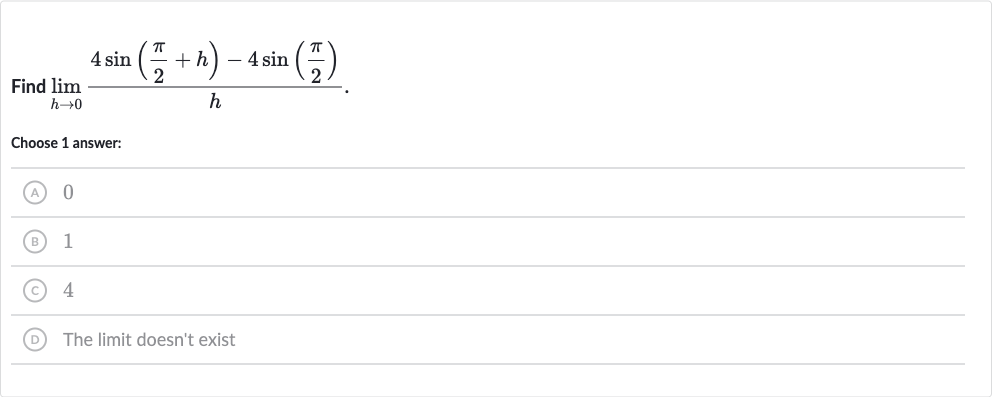Full solution
Q. Find .Choose answer:(A) (B) (C) (D) The limit doesn't exist
- Identify Limit: Identify the limit to solve: .
- Recognize Sin Value: Recognize that , so .
- Substitute Sin Value: Substitute with in the expression: .
- Apply Limit to Sine: Apply the limit to the sine function directly:
- Use Approximation: Use the fact that is approximately when is close to : .
More problems from Solve quadratic inequalities
QuestionGet tutor help
QuestionGet tutor help
QuestionGet tutor help
QuestionGet tutor help
QuestionGet tutor help
QuestionGet tutor help
QuestionGet tutor help
QuestionGet tutor help

